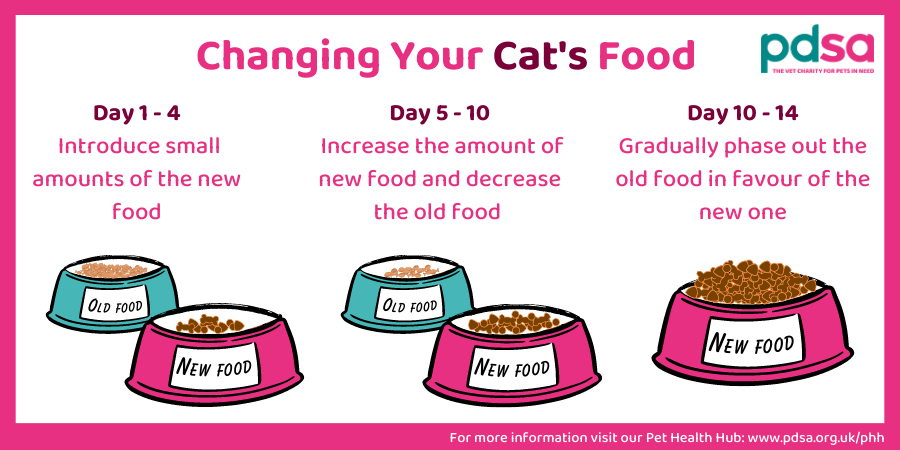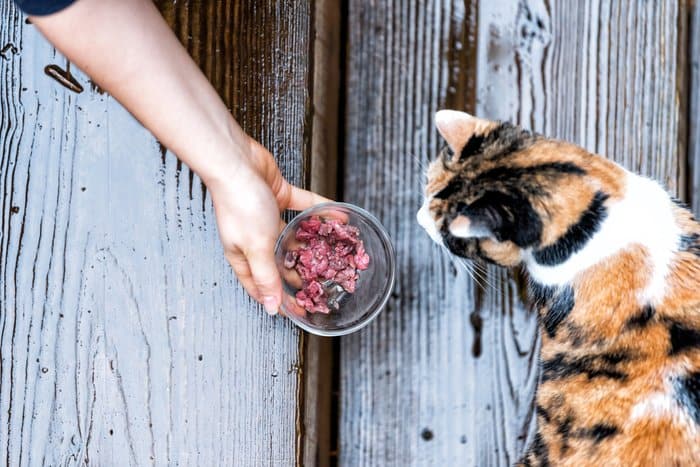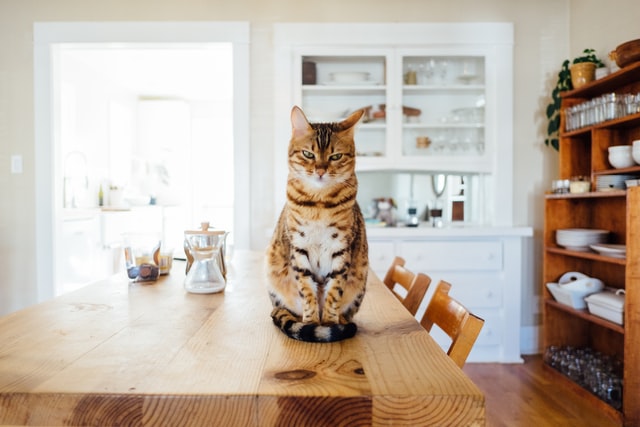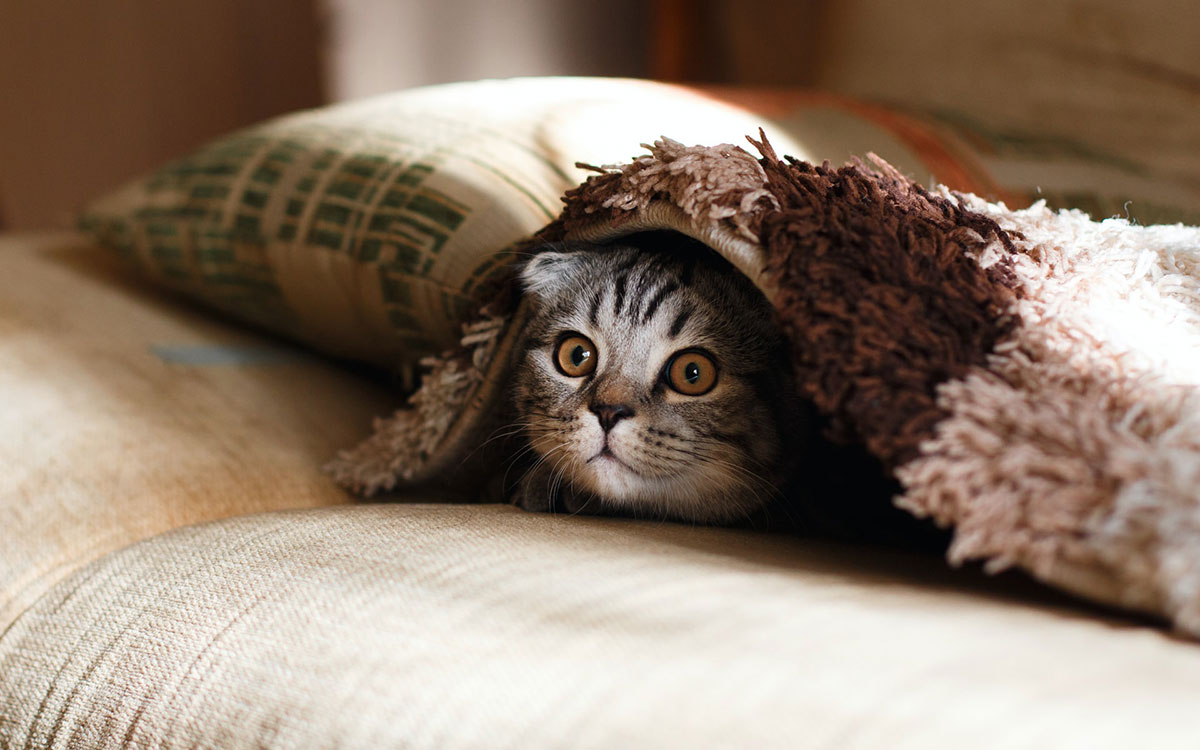Feeding a diabetic cat requires careful planning. The proper diet is crucial.
It helps manage blood sugar levels effectively. Cats with diabetes need specific nutrients. This allows them to stay healthy and energetic. Managing a diabetic cat’s diet can feel overwhelming. But with the proper knowledge, it becomes easier. It’s essential to understand what foods can benefit your cat’s health.
Some foods help control diabetes, while others might worsen it. Recognizing these can make a big difference in your cat’s well-being. This guide will explore beneficial foods and those to avoid. You can help your cat lead a happier, healthier life by learning more. Let’s dive into what to feed a cat with diabetes and ensure they get the nutrition they need.
Dietary Needs Of Diabetic Cats
Feeding a diabetic cat requires careful attention to their dietary needs. A balanced diet can help manage their blood sugar levels effectively. But what exactly does a balanced diet for a diabetic cat look like?
Nutritional Requirements
Your diabetic cat needs a diet that supports stable blood sugar levels. This means choosing foods that are low in carbohydrates and high in protein. Avoid foods with added sugars or high carbohydrate fillers.
Consider looking for commercial cat foods specifically designed for diabetic cats. These foods often have the right balance of nutrients to support your cat’s health. Always consult your vet to tailor the diet to your cat’s specific needs.
Role Of Protein And Carbohydrates
Protein plays a crucial role in your diabetic cat’s diet. It helps maintain muscle mass while providing the necessary energy. Opt for high-quality protein sources like chicken or fish.
Carbohydrates, on the other hand, should be minimized. High carbohydrate intake can spike blood sugar levels, worsening your cat’s condition. Choose foods with low glycemic index to avoid these spikes.
Have you ever noticed how your cat behaves after a meal? Monitoring their energy levels and mood can tell you how well their diet works.
Feeding a diabetic cat is a journey of observation and adjustment. What foods have you found most effective for your feline friend? Please share your experiences in the comments below, and let’s learn together!
Best Foods For Diabetic Cats
Diabetic cats benefit from low-carb, high-protein diets. Avoid sugary treats and foods rich in simple carbohydrates. Options like lean meats, cooked chicken, and specialized diabetic cat foods support healthy blood sugar levels. Always consult your vet for tailored advice on feeding your diabetic cat.
Caring for a diabetic cat involves more than just medication; diet plays a crucial role. Selecting the best foods can help manage your cat’s blood sugar levels effectively. It’s essential to focus on nutrient-rich options that support their health.
High-protein Options
Cats are obligate carnivores, meaning their bodies naturally thrive on meat. High-protein diets are ideal for diabetic cats because they mimic what cats would eat in the wild. Consider foods like chicken, turkey, and fish, which are rich in protein. These options help maintain muscle mass and provide essential nutrients. When my cat was diagnosed with diabetes, switching to a high-protein diet improved his energy levels noticeably.
Low-carbohydrate Choices
Carbohydrates can cause spikes in blood sugar levels, which isn’t ideal for diabetic cats. Opting for low-carb foods is a wise choice to keep these levels stable. Canned cat food generally contains fewer carbs than dry food, making it a better option. Have you ever checked the labels on your cat’s food? You might be surprised at the carbohydrate content. Choosing foods that list meat as the first ingredient can be beneficial. Incorporating these dietary changes can make a difference in your cat’s health. What dietary adjustments have you considered for your furry friend? Balancing protein and carbs can be key to managing diabetes effectively.
Commercial Cat Foods
Choosing the right commercial cat foods is crucial for diabetic cats. These specialized foods help manage blood sugar levels effectively. Many commercial options cater to diabetic cats, offering balanced nutrition and controlled carbohydrate levels. Selecting food that supports your cat’s health and dietary needs is essential. Let’s explore some vet-recommended brands and how to evaluate ingredients in these foods.
Vet-recommended Brands
Veterinarians often suggest brands known for quality and reliability. Royal Canin offers diabetic formulas that aid in blood sugar control. Hill’s Prescription Diet is another trusted choice with low-carb options. Purina Pro Plan provides tailored nutrition for diabetic cats. These brands focus on maintaining stable glucose levels. They offer formulas with high protein and low carbohydrate content. Consult your vet to choose the best brand for your cat’s needs.
Evaluating Ingredients
Understanding ingredients is key to selecting the right food. Look for high protein content from sources like chicken or fish. Avoid foods with high carbohydrate fillers like corn or wheat. Fiber-rich ingredients can aid in digestion and glucose regulation. Omega fatty acids are beneficial for overall health and coat condition. Always check for artificial additives or preservatives. Opt for natural and wholesome ingredients. This ensures your cat receives optimal nutrition.
Homemade Diets
Creating homemade diets for a cat with diabetes can be beneficial. It allows control over ingredients, ensuring a balanced meal. Many pet owners find homemade diets help manage their cat’s blood sugar levels. Fresh, wholesome foods may improve your cat’s overall health. But, it’s crucial to consult a veterinarian before making dietary changes.
Benefits Of Homemade Meals
Homemade meals can be tailored to a cat’s specific needs. They can include fresh proteins and low-carb vegetables. This helps in controlling blood sugar levels effectively. You can avoid unnecessary fillers and additives. Preparing meals at home gives peace of mind. You know exactly what’s in your cat’s food.
Recipes For Diabetic Cats
Start with lean protein like chicken or turkey. Cook it thoroughly and chop it into small pieces. Add some steamed broccoli or spinach. These vegetables are low in carbs and high in fiber. Mix in a small amount of cooked quinoa. Avoid grains high in carbohydrates. For flavor, add a pinch of turmeric. It has anti-inflammatory properties. Ensure all ingredients are natural and fresh.
Another recipe idea includes fish, like salmon. It’s rich in omega-3 fatty acids. Cook the salmon and flake it into small pieces. Combine it with boiled green beans. Add a tablespoon of pumpkin puree. Pumpkin is great for digestion. These homemade meals offer variety and nutrition. They help manage diabetes effectively.
Foods To Avoid
Managing a cat with diabetes involves careful dietary choices. Selecting the right foods helps control blood sugar levels. Knowing what to avoid is crucial. Certain foods can harm a diabetic cat’s health. Let’s explore what not to include in your cat’s diet.
High-sugar Foods
Cats with diabetes should avoid high-sugar foods. Sugars cause sudden spikes in blood glucose, making diabetes management difficult. Avoid giving sugary treats or table scraps. Even certain fruits can be too sugary for cats. Always check the sugar content on cat food labels. Opt for foods with low or no sugar content.
Processed Food Risks
Processed foods often contain unhealthy additives. These can worsen diabetes symptoms. Many have high levels of carbohydrates. This is harmful to diabetic cats. Preservatives and artificial flavors can also be problematic. They may disrupt your cat’s metabolic balance. Choose natural and whole foods instead. Look for foods with minimal processing.
Feeding Schedule And Portions
Cats with diabetes need a balanced diet. Focus on low-carb, high-protein foods, avoid sugary treats and high-carb meals, and feed them at regular intervals to help manage blood sugar levels. Consult your vet for the best feeding schedule and portions.
Feeding a cat with diabetes requires careful attention to their schedule and portion sizes. A consistent routine helps manage their blood sugar levels, ensuring they stay healthy and active. It’s about what you feed them and how and when. Establishing a regular feeding schedule can make a significant difference in your cat’s well-being.
Importance Of Consistency
Consistency in feeding times is crucial for diabetic cats. It helps regulate their metabolism and prevents sudden spikes or drops in blood sugar. Imagine your cat as a creature of habit; they thrive on routine. Feeding them at the exact times every day creates a predictable environment that supports their health. Would you want your meals to be unpredictable if you were managing diabetes? Your cat deserves the same stability.
Adjusting Portion Sizes
Portion control is key in managing a diabetic cat’s diet. Too much food can lead to weight gain, while too little can cause nutritional deficiencies. Keep an eye on your cat’s weight and adjust portions as necessary. Measure their food to ensure they’re getting just the right amount. A simple kitchen scale can be your best friend in this process. Have you tried weighing your cat’s food to find the perfect portion? Finding the right balance might take trial and error, but it’s worth it for your cat’s health. Consider consulting with your vet to determine the ideal portion size. A well-planned feeding schedule and appropriate portion sizes can make life easier for you and your furry friend. Have you ever noticed a change in your cat’s behavior when their feeding routine is disrupted? Share your experiences and insights below!
Monitoring And Adjusting Diet
Monitoring and adjusting your diabetic cat’s diet is crucial. It keeps their health in check and helps manage diabetes effectively. Regular observation of their eating habits is necessary. You should note any changes, whether in appetite or energy levels. These signs can indicate how well their current diet is working.
Signs Of Dietary Issues
Watch for signs your cat’s diet isn’t working. Increased thirst or urination may be a concern. Weight loss, despite normal eating, is another red flag. Look out for fatigue or lethargy. These could be signs of dietary problems. A lack of interest in food might suggest an issue. Please pay attention to how they react after meals. Digestive problems can indicate nutritional matters. Consistent vomiting or diarrhea is alarming.
Consulting With A Veterinarian
Consult a veterinarian for dietary advice. They can help adjust your cat’s diet. A vet can suggest suitable food options. They monitor your cat’s health closely. Regular check-ups are essential. A vet might recommend special food formulas. These are designed for diabetic cats. Professional guidance is necessary. It ensures your cat receives the best care. Always consult a vet for any dietary changes.

Credit: www.pdsa.org.uk
Additional Tips For Managing Diabetes
Feeding a diabetic cat requires careful food choices. Opt for high-protein, low-carbohydrate options. Avoid sugary treats and dry foods. These can spike blood sugar levels. Always consult a vet for personalized advice.
Managing a diabetic cat can feel overwhelming, but focusing on key lifestyle changes can significantly improve your feline friend’s health. Beyond choosing the right foods, additional strategies can make a world of difference. Here, we’ll explore practical tips to manage your cat’s diabetes so you can help them lead a happier, healthier life.
Exercise And Activity
Encouraging your cat to stay active is crucial. Physical activity helps regulate blood sugar levels. Simple activities like playing with a feather toy or laser pointer can get your cat moving. Consider creating a play routine that you and your cat can enjoy daily. This not only helps with their diabetes management but also strengthens their bond. Does your cat have a favorite toy that always gets them excited?
Regular Vet Check-ups
Routine vet visits are essential for monitoring your cat’s diabetes. Regular check-ups allow for timely adjustments in their treatment plan. Your vet can guide you on insulin dosage and dietary needs based on current health conditions. Don’t wait for symptoms to worsen before seeking advice. Make it a habit to schedule these visits and keep track of your cat’s progress. How often do you visit your vet, and have you noticed any changes after these appointments?
Managing a diabetic cat requires dedication and consistency. You can better manage their condition by integrating exercise and routine vet check-ups into their care. What’s one change you can make today to improve your cat’s health?

Frequently Asked Questions
What Not To Feed A Diabetic Cat?
Avoid feeding diabetic cats high-carb foods, sugary treats, and dry kibble. Stick to low-carb, protein-rich diets.
What Is The Best Diet For A Cat With Diabetes?
A high-protein, low-carbohydrate diet is best for diabetic cats. It helps regulate blood sugar levels effectively. Consult with a veterinarian to choose the right commercial or prescription diet. Regular monitoring and portion control are essential for managing diabetes in cats.
Always provide fresh water.
What Can I Feed My Cat With Diabetes Homemade?
Feed your diabetic cat high-protein, low-carb homemade meals. Use cooked chicken, turkey, or fish as the main ingredient. Avoid grains and starchy vegetables. Include healthy fats like fish oil. Consult your vet for portion sizes and nutritional balance. Constantly monitor your cat’s blood sugar levels.
Is Fancy Feast Good For Cats With Diabetes?
Due to its high carbohydrate content, Fancy Feast may not be ideal for diabetic cats. Consult your vet for better dietary options. They can recommend low-carb, high-protein foods formulated explicitly for diabetic cats to help manage their condition effectively.
Conclusion
Feeding a diabetic cat requires care and attention. Choose foods low in carbs. High-protein options help manage blood sugar levels. Avoid sugary treats and certain grains. Fresh water is essential for hydration. Consult a vet to tailor a diet plan.
Monitor your cat’s health regularly and adjust the diet as needed. A balanced diet supports better health. Your cat deserves the best care. Could you keep it simple and consistent? A healthy diet leads to a happier cat.






